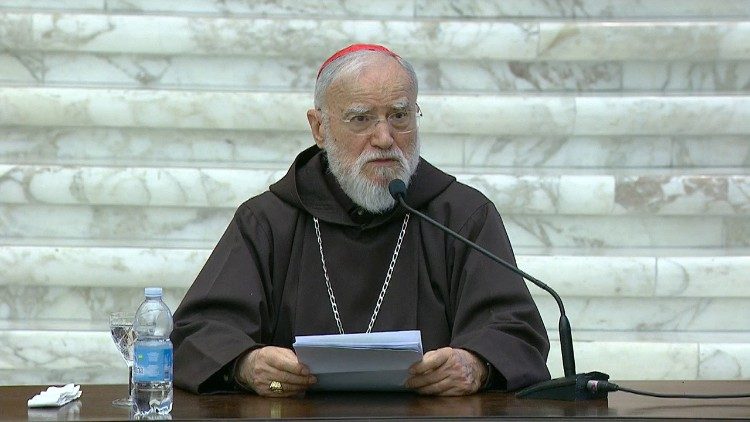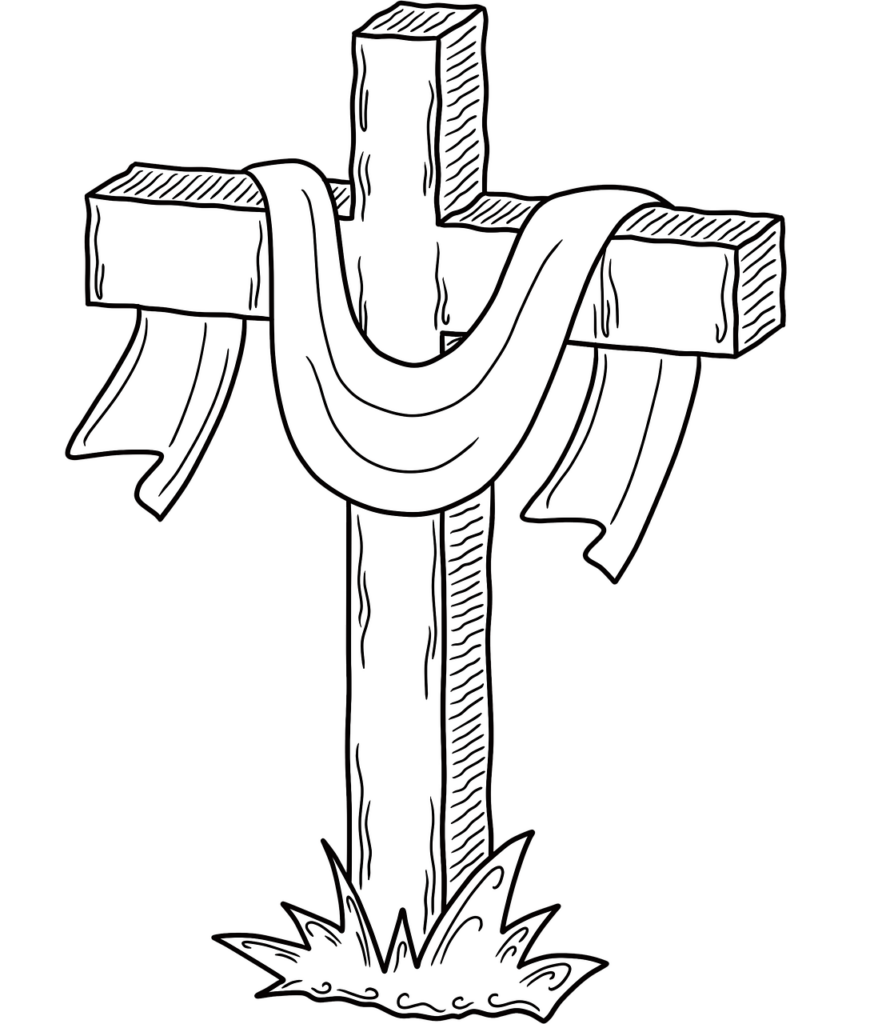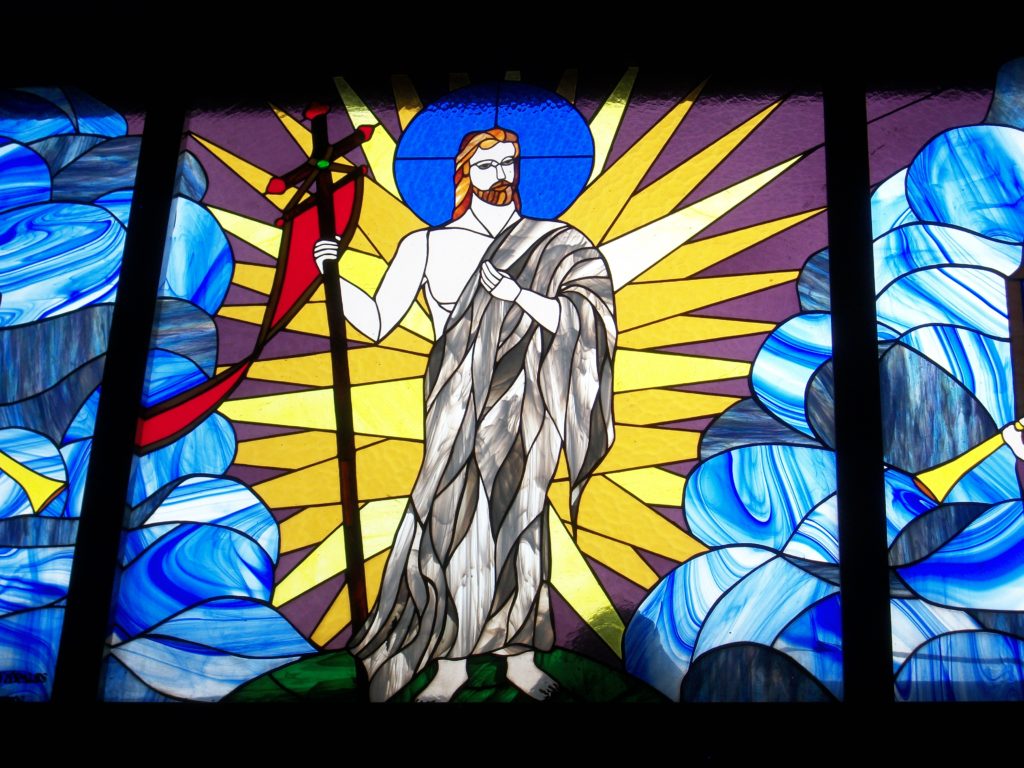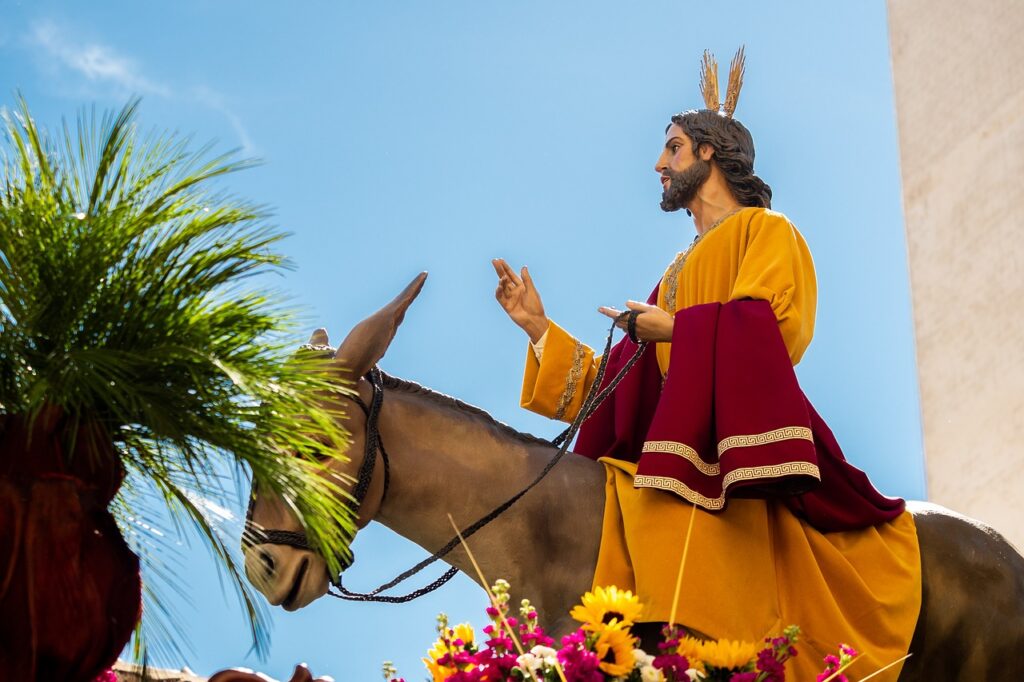Cardinal Cantalamessa – Second Sermon of Lent
‘Can any of you charge me with sin?’

On Friday, March 5, 2021, in the Paul VI Hall, the first sermon of Lent was presented by the Preacher of the Papal Household, His Eminence Cardinal Raniero Cantalamessa, O.F.M. Cap.
The theme of the Lenten meditations is: “But who do you say that I am?” (Matthew, 16: 15) – Christological dogma, font of light and inspiration”. The subsequent Lenten Sermons will take place on Friday 12, and 26 March.
Raniero Cantalamessa ofmcap
“Can any of you charge me with sin?”
Jesus Christ, “a true man”
Second Lent Sermon
The rise of modern thought stems from the Enlightenment and is epitomized in the maxim on living “etsi Deus non daretur”, as if God did not exist. The pastor Dietrich Bonhoeffer took up this maxim trying to give it a positive Christian connotation. In his intentions, it was not a concession to atheism, but a plan for spiritual life: doing one’s duty even when God looks distant; in other words, not turning him into a repairman-God, always willing to come to rescue wherever man has failed.
Even in this version, the maxim is debatable and has been rightly criticized. In the present context, though, we are interested in it for a totally different reason. The Church runs the lethal risk of living “etsi Christus non daretur”, as if Christ did not exist. It is the assumption on which the world and its media talk about the Church all the time. Their interest focuses on its history (above all the negative one, not that of holiness), its organization, its point of view on current issues, its internal facts and gossip. Jesus as a person is mentioned once in a while if at all. A proposal was made in Italy years ago – and is still in place in some countries – about a possible alliance between believers and non-believers based on common civil and moral rights, on the Christian roots of our culture, and so on. Such an agreement, in other words, was not based on what happened in the world with Christ’s coming, but on what happened later, after him.
An additional objective – and regrettably unavoidable – fact is that Christ does not come into play in any of the three most lively dialogues conducted between the Church and the world. He does not come into play in the dialogue between faith and philosophy, because philosophy deals with metaphysical notions, not with historical entities, as the person of Jesus of Nazareth is; he does not come into play in the dialogue with science, with which one may only discuss the existence of a creator God and of an “intelligent design” beneath evolution; finally, he does not come into play in the interreligious dialogue, where the focus is on what religions may do together, in the name of God, for the good of humankind.
In even the fairest concern with responding to the needs and provocative challenges of history and of culture, we all, including us believers, run the lethal risk of behaving, “etsi Christus non daretur”. As if it were ever possible to speak about the Church excluding Christ and his Gospel. I was deeply struck by the words of the Holy Father in the General Audience of November 25th last year. He said – and by the tone of his voice you could tell the subject deeply touched him :
We find here [in Acts 2:42] four essential characteristics of ecclesial life: listening to the apostles’ teaching, first; second, the safeguarding of mutual communion; third, the breaking of the bread; and fourth, prayer. They remind us that the Church’s existence has meaning if it remains firmly united to Christ, that is, in community, in his Word, in the Eucharist and in prayer. It is the way we unite ourselves to Christ. Preaching and catechesis bear witness to the words and actions of the Teacher; the constant quest for fraternal communion shields us from selfishness an among us. He will never be absent; it is really him in the Eucharist. He lives and walks with u d particularisms; the breaking of the bread fulfils the sacrament of Jesus’ presence s. And lastly, prayer, which is the space of dialogue with the Father, through Christ in the Holy Spirit. Everything in the Church that grows outside of these “coordinates” lacks a foundation.[1]
As can be seen, in the Pope’s words the four coordinates of the Church are reduced to only one: remaining anchored onto Christ. All this has made me want to devote these Lenten meditations to the person of Jesus Christ. Personally, I was the first to have to overcome a possible objection. A glance at the index of the documents of Vatican II, under the entry ‘Jesus Christ,’ or a quick scroll through the papal documents of the last few years tells us much more than what we can say in these short Lenten meditations. What use is it, then, to choose this subject? The thing is that here we will be talking about Jesus Christ alone, as if he alone existed and it was worth dealing with him alone (which is then, ultimately, the truth!).
We can do that because we are not forced, as the Magisterium is, to also deal with other issues: pastoral, moral, social, environmental problems, as well as these days the challenges caused by the pandemic. It would be totally wrong if we only did what we do here, but equally wrong if we never did. From my experience with television, I have learnt one thing. There are various ways of framing an object: a ‘wide shot,’ when the speaker is framed with everything else surrounding him and a ‘close up’, when only the speaker is seen, and finally, the so-called ‘extreme close-up’, when only the speaker’s face or even their eyes are framed. Well, in these meditations, we propose, with God’s help, to shoot ‘extreme close-ups’ framing the person of Jesus Christ.
Our purpose is not apologetic, but spiritual. In other words, we do not speak to convince others, non-believers, that Jesus Christ is the Lord, but to make it possible for him to become ever more truly the Lord of our life, our all-encompassing reference point, to the point of feeling, like the Apostle, ‘taken possession of by Christ’ (Phil 3:12) and to be able to say with him – at least as a wish – ‘to me life is Christ (Phil 1:21). Therefore, the question that will accompany us is not going to be: ‘What place does Jesus have in the world and in the Church?’, but: ‘What place does Jesus have in my life?’ Moreover, this is going to be the best way of arousing other people’s interest in Christ, that is the most effective way of evangelizing.
Yet, we need to clarify one thing. Which Christ do we want to talk about? There are indeed various ‘Christs’: there is the Christ of historians, of theologians, of poets, and even the Christ of atheists.[2] We wish to speak of the Christ of the Gospels and of the Church, more precisely, of the Christ of the Catholic dogma defined by the Council of Chalcedon of 451. Now and then it is good to listen to that definition again, at least in part in the original text:
Following the holy Fathers, we unanimously teach to profess one and the same Son: our Lord Jesus Christ, perfect in his divinity and perfect in his humanity, true God and true man, [made up of] rational soul and body, one substance with the Father for the divinity, and one substance with us for the humanity, like us in all things, except for sin […], one and the same only-begotten Jesus Christ; to be acknowledged in two natures […], the property of each nature unfailing and concurring to form one only person and hypostasis.[3]
We can use the image of a dogmatic triangle on Christ: the sides are the humanity and the divinity of Christ and the summit is the unity of his own person.
The Christological dogma does not intend to be a summary of all the Biblical data, a sort of distillate containing the huge wealth of statements regarding Christ which can be read in the New Testament, by reducing them to the slim and dry formula: ‘two natures, one person.’ If that were the case, the dogma would be terribly reductive and even dangerous. Yet, that is not the case. The Church believes and preaches about Christ all that the New Testament says about him, without any omissions. By means of the dogma, the Church has only tried to sketch a reference framework, to draft a sort of ‘fundamental law’ which any statement on Christ is to go by. All that is said about Christ must by now respect that certain and inconvertible fact: the fact that he is God and man at the same time; better said, in the same person.
Dogmas are ‘open structures’ (Bernhard Lonergan), willing to accept all the genuine novelties and realities that each age discovers in the word of God. They are open to evolve from within, providing that they always proceed ‘in the same sense and along the same line.’ Which means that the interpretation given in one age must not contradict that of the previous age. Hence, approaching Christ by the way of dogmas does not mean tiringly repeating the same things, perhaps only changing the wording. It means reading Scripture within Tradition, with the Church’s eyes, that is reading it in an ever ancient and ever new manner.
Christ, a perfect man
Let us see what all this means, if we apply it to the dogma of the perfect humanity of Christ, which is the ‘extreme close-up’ we want to use to frame Jesus in the present meditation.
During Jesus’s life on earth nobody ever thought of questioning the reality of the humanity of Christ, his really being a man like others. When the New Testament refers to Christ’s humanity, its interest focuses more on its holiness than on its truth or reality, that is more on its perfection that on its ontological completeness.
At the time of the Council of Chalcedon this notion of Christ had not changed, but the focus was no longer the same. Against the heresy of Docetism, the Church had to affirm that Christ had had a real human flesh; against the Apollinarian heresy, that he had also had a human soul, and later, in the seventh century, the Church would have to fight against the Monothelite heresy, for the acknowledgement of Christ also having a will, and therefore a truly human freedom. Due to the heresies we have just hinted at, all the interest in Christ as a ‘man’ shifted from the problem of the novelty and holiness of such humanity, to that of its perfection or ontological completeness.
As I said, the New Testament is interested not so much in claiming that Jesus is a ‘true’ man, as in his being a ‘new’ man. He is defined by Paul as ‘the last Adam’ (eschatos), that is ‘the ultimate man’ (cf. 1Cor 15:45ss.; Rm 5:14). Christ has revealed the new self, the one ‘created in God’s way in righteousness and holiness of truth’ (Eph 4;24; cf. Col 3:10). Jesus Christ is ‘the Holy one of God’: this is who he is solemnly proclaimed in two moments of his earthly life (Lk 4:34; Jn 6:69). Jesus is not so much the human being that looks like other human beings, as the human being that all other human beings are to look like. He is the only one of whom one has to say what Greek philosophers said of man in general: he is ‘the measure of all things’!
Once the dogmatic and ontological fact of the perfect humanity of Christ has been secured, today we may once again uphold this primary Biblical notion. We also have to do so for another reason. Nowadays, nobody denies that Jesus was a man, like the supporters of Docetism and others who denied the full humanity of Christ. In fact, we are witnessing a strange and upsetting phenomenon: the ‘true’ humanity of Christ is silently affirmed as an alternative to his divinity, as a kind of counterpoise. It is a general contest to determine who goes furthest in affirming the ‘full’ humanity of Jesus of Nazareth, by going so far as assigning him not only suffering, anguish and temptation, but also doubt and even the possibility of making mistakes.
So, the dogma of Jesus as a ‘true man’ has either become a truth that is so much taken for granted that it does not bother or upset anyone, or even worse, it has become a dangerous truth that is used to justify instead of criticizing the secular thought. Affirming the full humanity of Christ today is like shooting fish in a barrel.
The holiness of Christ
Let us therefore devote the time we have left to contemplate (it is the right word) the holiness of Christ and be dazzled by it, before drawing any practical consequences. This is the first ‘extreme close-up’ on Jesus we want to use in this meditation: letting ourselves be fascinated by the infinite beauty of Christ, ‘the most handsome of the sons of mankind.’
Observing the Gospels shows us that the holiness of Jesus is not only an abstract principle, or a metaphysical deduction, but it is genuine holiness, in its being lived out moment by moment and in the most concrete situations in life. The Beatitudes, to give an example, are not just a beautiful life plan that Jesus sketches for others; it is his own life itself and his experience as it is revealed to the disciples, by calling them to access the same sphere of holiness. The Beatitudes are Jesus’s self-portrait.
He teaches what he does; that is why he can say: ‘Learn from me, for I am meek and humble of heart’ (Mt 11:29). He says that one must forgive their enemies but he himself goes as far as forgiving those who are crucifying him with the words ‘Father, forgive them, they know not what they do’ (Lk 23:34). In fact, it is not a single episode, one or the other, that helps to exemplify the holiness of Jesus, but every deed, every word of his mouth.
Beside this positive element of the full and constant obedience to his Father’s will, the holiness of Christ also shows a negative element, which is the absolute lack of any sin, ‘Can any of you charge me with sin?’ says Jesus to his opponents (Jn 8:46). On this point all apostolic witnesses speak with one voice: he ‘did not know sin’ (2 Cor 5:21); ‘he committed no sin and no deceit was found in his mouth’ (1 Pt 2:22); he had ‘been tested in every way, yet without sin’. (Hb 4:15); ‘It was fitting that we should have such a high priest: holy, innocent, undefiled, separated from sinners’ (Hb 7:26). John, in his first letter, does not grow tired of proclaiming ‘he is pure… in him there is no sin..; he is righteous» (1 Jn 3:3-7).
Jesus’ conscience is a transparent crystal. Absolutely no admission of guilt there, nor apology begging forgiveness either before God or men. There always reigns the serene certainty of truthfulness and righteousness and of good conduct, which is not the same as the human presumption of justice. No other character in history has dared say the same about themselves.
Such absence of guilt – and of admission of guilt! – is not connected with one or another act or saying of the Gospel, the historicity of which may be questioned, but the whole Gospel exudes it. It is a lifestyle which is reflected in everything. You may look in the remotest corners of the Gospels and the result is always the same. The idea of an exceptionally holy and exemplary humanity is not enough. This idea would contradict that lifestyle. Such confidence, such exclusion of sin, as can be noticed in Jesus, would surely indicate an extraordinary humanity, but extraordinary in terms of pride, not of holiness. An awareness of that nature either amounts to the greatest sin ever committed, greater than Lucifer’s, or to sheer truth. The resurrection of Christ provides concrete proof that it was absolute truth.
‘Sanctified in Christ Jesus’
We now move on to consider what the holiness of Christ means for us. And here we immediately come across some good news. There is indeed some good news, a joyful proclamation, also regarding the holiness of Christ. It is not so much that Jesus is the Holy one of God, or that we too are meant to be holy and immaculate. No, the happy surprise is that Jesus communicates, grants, gives us his holiness away for free! It is that his holiness is also ours. Even more: that he himself is our holiness.
Every human parent can hand on to their children what they have, but not what they are. If they are artists, scientists, or even saints, not necessarily are their children born artists, scientists or saints as well. Parents can teach those skills or give them an example, but not hand them over as a sort of inheritance. Yet, Jesus, in our Baptism, does not only hand on what he has, but also what he is. He is holy and makes us holy; he is the Son of God and makes us children of God.
Vatican II also says it: ‘The followers of Christ are called by God, not because of their works, but according to His own purpose and grace. They are justified in the Lord Jesus, because in the baptism of faith they truly become sons of God and sharers in the divine nature. In this way they are really made holy’ (Lumen gentium, 40). Christian holiness, prior to being a duty, is a gift.
What shall we do to embrace this gift and turn it as it were into an experience that is lived out, not only believed? The first fundamental answer is faith. Not just any faith, but the faith through which we make our own what Christ has won for us. A daring faith that gives new wings to our Christian life. Paul wrote:
Christ Jesus […] became for us wisdom from God, as well as righteousness, sanctification, and redemption, so that, as it is written, “Whoever boasts, should boast in the Lord (1 Cor 1, 30-31).
What Christ became ‘for us’ – righteousness, sanctification, and redemption – belongs to us; it belongs to us more than if we had done it ourselves! As the great Byzantine master Cabasilas put it: ‘Since we no longer belong to ourselves, but to Christ, who bought us back at a high price, then what is Christ’s own belongs to us, it belongs to us more than what comes from us.’[4] In this regard, I never get tired of repeating what St Bernard wrote:
Indeed, I trustfully grab for myself [in the original, I usurp!] what I lack from the bowels of the Lord, because they overflow with mercy. […] My merit, therefore, is the mercy of the Lord. Surely my merit will not be wanting until the Lord is wanting in mercy. If the mercies of the Lord are many, I too am very great as regards my merits. […] Will I possibly sing my righteousness too? ‘O God, I will tell of your singular justice’ (cf. Ps 71: 16). It is indeed mine too; for you have made yourself righteousness coming from God (cf. 1Cor 1:30)[5].
We are not to resign to die before carrying out, or renewing, this kind of ‘coup’ recommended by Saint Bernard. What holy impudence!
Saint Paul often calls on Christians to ‘put off the old self’ and to ‘put on Christ’[6]. The image of stripping and putting on does not only point to an ascetic operation, consisting in discarding certain ‘clothes’ or ‘habits’ and replacing them with others, that is dropping vices and acquiring virtues. That operation is first of all accomplished by means of faith. In a moment of prayer, in this Lent tide, one can sit before the Cross and, with an act of faith, hand over to him all their sins, their past and present misery, as they strip and throw in the fire their dirty clothes; then they again put on the righteousness that Christ has purchased for them. He or she, as the Publican did in the temple, will say: ‘O God, be merciful to me a sinner!’ and they too go home ‘justified’ (cf. Lk 18:13-14).
Some Church Fathers encompassed this great secret of Christian life in an image. Imagine, they say, that an epic fight has just taken place in the stadium. A brave man has faced the cruel tyrant enslaving the city with huge toil and suffering and has overcome him. You were on the grandstand, you did not fight, or toil or suffer any wounds. Yet, if you look up to the brave man, if you rejoice with him on his victory, if you weave flower crowns for him, if you provoke and arouse the assembly to support him, if you bow in joy to the winner, you kiss his head and you shake his right hand; in sum, if you are so mad about him as to consider his victory as your own, then I tell you will certain have your share of the winner’s prize.
There is more than that, though: suppose your winner has no need of the prize he won for himself, but wishes, more than anything else, to see his supporter being honored and considers a prize of his fight the crowning of his friend, in that case will the latter not possibly win the crown, even though they did not toil or suffer wounds? They will surely win it! The same – these Fathers say – happens between Christ and us. He is the brave one who on the cross overcame the great tyrant of the world and gave us life again.[7] We are asked not to be absent-minded ‘spectators’ of such pain and of such love. As Saint John Chrysostom writes:
Our swords are not stained with blood, we did not take part in the fight, we did not suffer wounds, we did not even see the battle, and behold we obtain a victory. The fight was his own, the crown is our own. And since we too have won, let us imitate what soldiers do in these cases: with joyful voices let us extol his victory, let us sing hymns of praise to the Lord.[8]
Of course, this is not the end of the story. From appropriation we need to move on to imitation. The above-mentioned text of the Second Vatican Council on holiness as a gift carries on by saying: ‘Then too, by God’s gift, they must hold on to and complete in their lives this holiness they have received. They are warned by the Apostle to live “as becomes saints” (Eph 5:3) and to put on “as God’s chosen ones, holy and beloved a heart of mercy, kindness, humility, meekness, patience” (Col 3:12), and to possess the fruit of the Spirit in holiness (cf. Gal 5:22; Rm 6:22)’.
Yet we have so many other opportunities to hear of the duty to imitate Christ and to nurture virtues, that, for once, it is fitting to stop there. Another reason is that, if do not make that initial leap in faith that opens us to the grace of God, we will not go that far in the way of imitation. ‘As saint Gregory the Great put it: ‘You do not get from virtues to faith but from faith to virtues.’[9]
If we really do not want to part without at least one small practical resolution, here is a helpful one. Jesus’s holiness consisted in always doing what pleased the Father. He said: ‘I always do what is pleasing to him’ (Jn 8:29). Let us try and ask ourselves as often as we can, before any decision to make and answer to give: ‘What is it, in the present case, that would be pleasing to Jesus?’, and do that without delay. Knowing what Jesus’s will is turns out to be easier than knowing in abstract terms what ‘God’s will’ is (even though the two in fact coincide). To know Jesus’s will we have to do nothing but remember what he says in the Gospel. The Holy Spirit is there, ready to remind us.______________________________________________
Translated from Italian by Paolo Zanna
[1] (http://www.vatican.va/content/francesco/en/audiences/2020/documents/papa-francesco_2020.11.25_udienza-generale.html).
[2] Cf. Milan Machovec, Gesú per gli atei, Cittadella Editrice, Assisi 1973.
[3] Denzinger – Schonmetzer, Enchiridion Symbolorum, nr. 301-302.
[4] N. Cabasilas, Life in Christ, IV, 6 (PG 150, 613).
[5] Bernard of Claivaux, Sermons on the Song of Songs, 61, 4-5 (PL 183, 1072).
[6] Cf Col 3:9; Rm 13:14; Gal 3:27; E4:24.
[7] Cf N. Cabasilas, Life in Christ, 5 (PG 150, 516 s.).
[8] John Chrysostom, De coemeterio et de cruce (PG, 49, 396).
[9] St Gregorio Magno, Omelie su Ezechiele, II, 7 (PL 76, 1018).
Related

Reflection by Bishop Enrique Díaz: Alleluia, alleluia
Enrique Díaz
20 April, 2025
5 min

Christ is Risen! Alleluia! Commentary by Fr. Jorge Miró
Jorge Miró
20 April, 2025
3 min

Easter: Mystery of Freedom
Carlos J. Gallardo
20 April, 2025
5 min

Reflection by Bishop Enrique Díaz: On a Donkey
Enrique Díaz
13 April, 2025
5 min
 (EN)
(EN)
 (ES)
(ES)
 (IT)
(IT)

